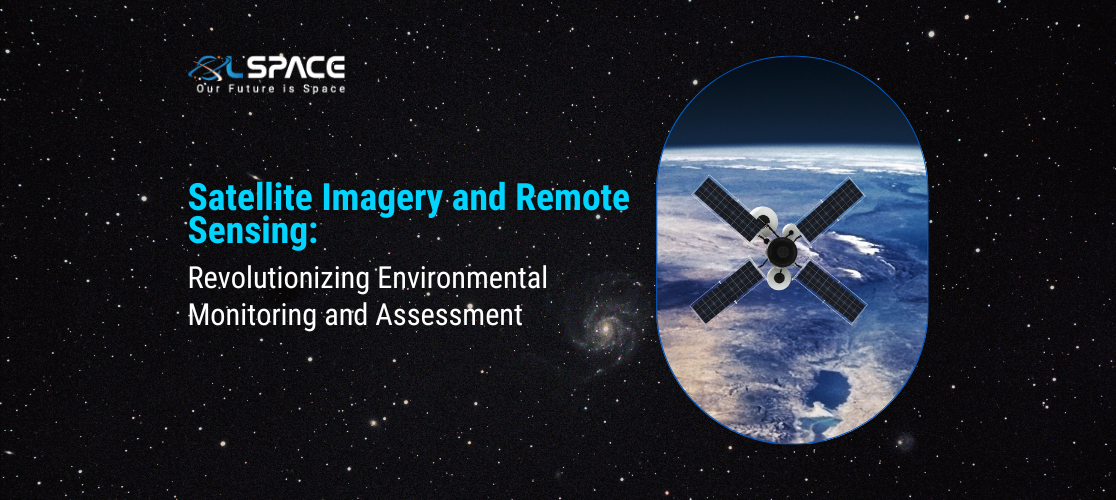09 April 2024
Satellite Imagery and Remote Sensing: Revolutionizing Environmental Monitoring and Assessment

Satellite imagery and remote sensing technologies have revolutionised our ability to monitor and assess the Earth’s environment with unprecedented detail and efficiency. From tracking deforestation and land cover changes to monitoring air and water quality, these tools provide valuable insights into environmental dynamics at local, regional, and global scales. This article explores the transformative impact of satellite imagery and remote sensing on environmental monitoring and assessment, highlighting key applications, benefits, and future prospects.
1. The Power of Satellite Imagery:
Satellite imagery offers a bird’s-eye view of the Earth’s surface, capturing high-resolution images of vast areas with remarkable clarity. These images provide a wealth of information about land cover, vegetation health, urban development, and natural phenomena, enabling scientists and policymakers to monitor environmental changes over time.
2. Monitoring Land Use and Land Cover Changes:
Satellite imagery plays a crucial role in monitoring changes in land use and land cover, including deforestation, urban expansion, agricultural practices, and natural habitat loss. By analysing satellite data, researchers can assess the impact of human activities on ecosystems, biodiversity, and carbon sequestration, informing conservation efforts and sustainable land management practices.
3. Assessing Natural Disasters and Hazards:
Remote sensing technologies facilitate the rapid assessment and monitoring of natural disasters and hazards, such as wildfires, floods, hurricanes, and earthquakes. Satellite imagery provides real-time data on disaster extent, severity, and impacts, aiding emergency response efforts, disaster preparedness planning, and post-disaster recovery and reconstruction.
4. Monitoring Air and Water Quality:
Satellite-based remote sensing allows for the monitoring of air and water quality parameters, including atmospheric pollutants, water turbidity, and algal blooms. By analysing satellite-derived data, scientists can identify sources of pollution, assess environmental health risks, and develop strategies for mitigating pollution impacts on human health and ecosystems.
5. Tracking Climate Change Impacts:
Satellite imagery and remote sensing play a vital role in tracking the impacts of climate change on the Earth’s environment, including shifts in temperature, precipitation patterns, sea level rise, and glacial melt. These tools provide essential data for climate modeling, impact assessments, and adaptation planning at local, regional, and global scales.
6. Supporting Conservation and Biodiversity Monitoring:
Satellite imagery facilitates the monitoring and conservation of biodiversity and natural habitats by mapping ecosystems, identifying protected areas, and tracking wildlife populations. Remote sensing data support habitat restoration efforts, wildlife management strategies, and the assessment of ecosystem services provided by natural landscapes.
7. Enhancing Agricultural Management and Food Security:
Remote sensing technologies contribute to agricultural management and food security by monitoring crop health, estimating yields, and detecting changes in land productivity. Satellite imagery enables farmers, policymakers, and international organisations to make informed decisions about crop management practices, resource allocation, and food distribution in response to changing environmental conditions and climate variability.
8. Future Prospects and Challenges:
As satellite technology advances and data availability improves, the potential applications of satellite imagery and remote sensing in environmental monitoring and assessment continue to expand. However, challenges such as data accessibility, processing capacity, and algorithm development remain to be addressed to fully harness the benefits of these technologies for sustainable development and environmental stewardship.
Conclusion:
Satellite imagery and remote sensing have transformed our ability to monitor, assess, and manage the Earth’s environment, offering invaluable insights into environmental dynamics and human impacts on the planet. By leveraging the power of satellite technology, researchers, policymakers, and environmental practitioners can address pressing environmental challenges, inform evidence-based decision-making, and work towards a more sustainable and resilient future for our planet and its inhabitants.
